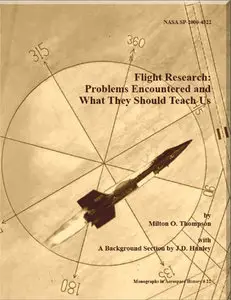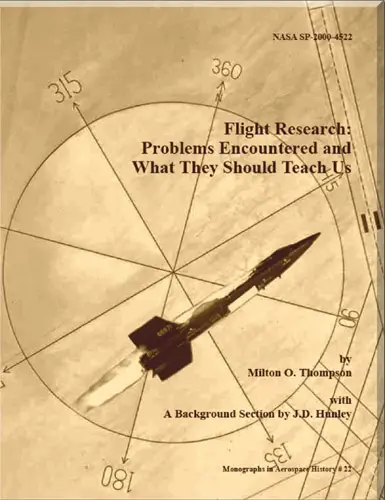Milton O. Thompson, J.D. Hunley, "Flight Research: Problems Encountered and What They Should Teach Us"
2000 | pages: 56 | ISBN: 149379437X | PDF | 3,4 mb
2000 | pages: 56 | ISBN: 149379437X | PDF | 3,4 mb
Milt Thompson's account of lessons to be learned involves aspects of the history of flight research at what was then called the Flight Research Center and its predecessor organizations— redesignated in 1976 the Hugh L. Dryden Flight Research Center. Many fascinating topics are covered: lifting bodies, the P-51 Mustang, X-planes, XS-1, X-15, the YF-12 Blackbird, the Space Shuttle, and the Lunar Landing Research Vehicle. From the time of the Wright brothers' first flight in 1903 until the end of World War II, airplane technology evolved considerably. The early decades' mono-and biplanes of wooden framework, typically braced with wire and covered with cloth, gradually gave way to an all-metal construction and improved aerodynamic shapes, but most aircraft in World War II still featured propellers and even the fastest of them flew at maximum speeds of about 450 miles per hour. For example, the North American P-51 Mustang, one of the finest prop fighters used in the war, had a top speed of 437 miles per hour when flying a level course at low altitude. This compared with low-level maximum speeds of 514 and 585 mph respectively for the Messerschmitt Me 262A and Gloster Meteor F. Mk. jet fighters, both of which thus still flew well below the speed of sound (Mach 1) in level flight. Even so, during the early 1940s, airplanes like Lockheed's P-38 Lightning began to face the problem of compressibility in dives —characterized (among other things) by increased density, a sharp rise in drag, and disturbed airflow at speeds approaching Mach 1. In partial contrast to flight test, flight research sought and seeks fundamental understanding of all aspects of aeronautics, and in achieving that understanding, its practitioners may fly experimental aircraft like the early X-planes and the D-558s or armed service discards like early production models of the F-15s, F-16s, and F-18s researchers at Dryden are modifying and flying today.
My Links



